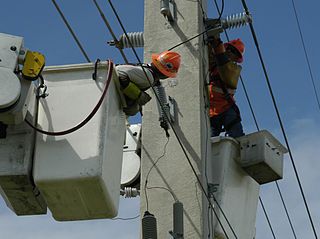Rethinking the Sustainable Generation and Consumption of Electricity
As this article suggests, everywhere one looks in the new energy industry one finds references to disruptive technologies, not only in the various “flavors” of renewable energy, but in the basic ways in which electricity is delivered. Take DG (distributed generation) as an example. Everyone agrees that a larger number of points of generation, closer to their loads, will create less line loss and higher reliability. Then consider energy storage and DR (demand response), and realize the tremendous potential these concepts possess to deal with the most expensive aspect of our grid, i.e., the fact that it’s built to handle peak loads that occur only about 100 hours per year.
What is required here is an entirely new way of regulating utilities, so that they are adequately compensated for all this. Today, utilities are willing to make investments in anything whose costs they can pass along to rate-payers. If you’re in Kansas and you want hydroelectricity – and the local PUC will let the power company bill its customers accordingly — you’ll get it in a heck of a hurry.
This isn’t what we need.
I’m hoping to see a day when utilities’ investments promote the sustainable generation and consumption of electricity. This, of course, will mean rethinking this subject from the ground up. Sounds like a light-bulb of an idea to me.


The following is a link to a website that describes a reliable, clean and sustainable energy system:
http://theresilientearth.com/?q=content/true-alternative-energy-power-thorium
This gets down to tariffs. Utilities, as you pointed out, are good at making propositions in their own interest. Are there any groups that have come up with independent thinking and the associated written proposition(s) for how a smart grid would financially behave? I would not anticipate the utilities themselves proposing anything beyond what they are already doing as regards programmatic DR load shedding and TOU schedules.
The UK & to varying degrees, right across Europe, there has been a market in electricity for quite a number of years – with utilities buying electricity from a number of different suppliers (including international trade)rather than producing all the electricity they need using their own generators. There are a number of utilities competing for market share, and the grid is operated by a separate company that sells transmission services to the utilities.
In this set up, utilities are not able to control the whole generation system and will buy whichever supplies give them the greatest margin – or which best meet their requirements (some for example offer a 100% renewable tariff as an option to their customers).
With this market system combined with feed in tariffs and renewable obligation certificates, wind and solar power almost always cost the utilities less in direct purchase costs than any other supplies.
In this system, there is no perverse incentive to build excess capacity or to expand the grid to a greater degree than technically required, and the utilities are bound by law to limit their CO2 emissions, and required to promote energy efficiency. Most householders can get low cost or free insulation paid for by the electricity utilities, or buy insulation materials at below market cost subsidised by the utilities.
There is also a market for grid regulation services with consolidators buying demand response from private generators, operators of large refrigeration plant, and customers able to bring forward or defer a proportion of their electricity consumption.
To explain how this works, the grid operator calls for 50 megawatts reduction in demand / increase in generation and the consolidator interrupts a number of large air conditioning / refrigeration plants, water heaters or industrial plant, or starts up sufficient private back up generation to meet the call. The consolidator gets paid by the grid for this service & passes on some of the fee to the small operators who deliver the service. If the grid operator calls for extra consumption or reduced generation to stabilise the grid, the opposite happens – water heaters, air conditioning plant & industrial plant switches on and private generators temporarily reduce their output.